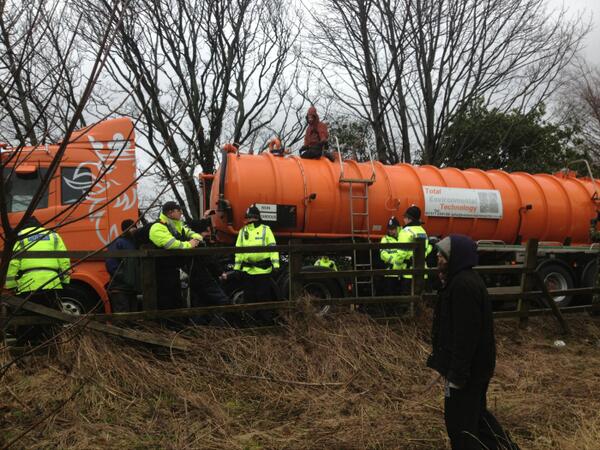3/2/14
Nine activists from Romania and Germany climbed the fire escape of Minvest Deva’s headquarters today and unfurled two thirty-foot-long banners calling for a ban on cyanide mining. They were fined 500 lei each, but declared they would not pay.
3/2/14
Nine activists from Romania and Germany climbed the fire escape of Minvest Deva’s headquarters today and unfurled two thirty-foot-long banners calling for a ban on cyanide mining. They were fined 500 lei each, but declared they would not pay.
The banners read, “Respect Existance or Expect Resistance,” “Mining with Cyanide Causes Death!” and other slogans
The activists chose Minvest Deva due to conflict of interest. According to one activist named Mihnea Blidariu who was involved in the banner drops, ”The current Director of Deva Gold , Mr Nicolae Stanca, is the same person who in 1987 signed the Association Agreement between Gabriel Resources and the Romanian state.”
The full statement from the group is below (from Revolution Sociale)
“Today, the 3rd of February 2014, we, citizens of Romania and Germany have occupied Minvest Deva headquarters in order to draw attention at the illegal and illegitimate favoring of mining companies by the Romanian state authorities.
We denounce the cyanide based mining projects from Certej, Deva-Muncel, Băiţa Crăciunești, Brad, Rovina și Roșia Montană, projects that have destructive effects towards nature and humans and can only start with no regard of legal procedures.
Only at Certej, in 16 years of operation 26.448 tons of sodium cyanide and 15.280 tons of copper sulphate would be used. Large-scale cyanide use does not bring prosperity to a community, only death and the impossibility to develop other economic activities. We denounce deeds that reek of corruption, conflict of interests and abuses of Nicolae Stanca, current director at Deva Gold. He has signed, in the name of the Romanian state, the associating documents between Minvest Deva and Gabriel Resources in 1997, then being employed by the controverted businessman Frank Timis.
We condemn the government’s intention to bring forward to the parliament a new mining law, we condemn the irresponsible and undignified attitude of the Minister of Environment, Rovana Plumb, and ask for her resignation. We warn prime-minister Victor Ponta that a new attempt to pass the mining law with absurd stipulations that only serve the interests of the mining industry will not remain without consequences. In his urgency and pressure on the parliamentarians to make forced expropriation of citizens by private companies legal he is doing exactly the opposite of what the public opinion wants. As the events of last year have demonstrated, illegitimate support of mining companies is not backed up by parliament (two legislative attempts have failed last year), nor by the tens of thousands of people that have gone to the streets in 2013.
Last but not least, we wish to draw attention to the total abandon of morality by political people such as Dan Șova or Rovana Plumb. Dan Șova, from the government table proposes legal solutions for mining projects of his mother’s law clients. Cyanide-based projects are then passed to be evaluated to his colleague minister, Rovana Plumb, who will do anything to see them approved, including dropping charges in court.
We ask the citizens of Romania to inform themselves correctly about the many drawbacks of mining projects and remember the horrible ecological accidents at Certej in 1971 and Baia Mare in 2000. We do not want such tragedies to be repeated! We show our solidarity with movements around the world that struggle against such destructive mining projects: Kremnica (Slovakia), Halkidiki (Greece), Corcoesto (Spain), Salave Asturias (Spain), Bergama (Turkey), Kumtor (Kyrgyzstan), Talvivaara (Finland).
Respect existence or expect resistance!
Romania without cyanide!
Live update pe mobil: http://goo.gl/RnJUsl
Live update pe Vice: @MinvestDevaLIVE (this account has now been suspended by Twitter)
Via https://www.facebook.com/rosia.montana.in.unesco









































